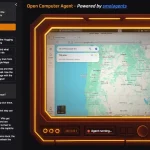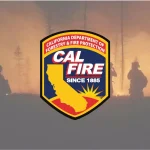In a groundbreaking move to enhance public safety, California has launched “Ask CAL FIRE,” an AI-powered chatbot that delivers real-time wildfire resources in 70 languages. Unveiled by Governor Gavin Newsom on May 9, 2025, this tool aims to make critical wildfire information accessible to all Californians, regardless of language barriers. As AI continues to transform emergency communication, this chatbot could become a lifeline for diverse communities, though it also faces challenges related to accuracy, accessibility, and privacy.
The “Ask CAL FIRE” chatbot is designed to answer common questions about wildfire prevention, preparedness, and response. Available on the CAL FIRE website, it provides near-real-time updates on evacuation routes, safety protocols, and fire conditions, ensuring that non-English-speaking residents can access this information in their native language. With California facing unprecedented wildfire risks—over 16,000 homes were lost in the Los Angeles area alone in 2025, according to recent reports—this tool is a timely addition to the state’s emergency response arsenal. It aligns with other AI-driven accessibility solutions, such as Google’s Gemini AI for kids, which prioritize inclusivity.
The chatbot’s multilingual capabilities are a game-changer for California’s diverse population. By supporting 70 languages, it ensures that critical information reaches immigrant and non-English-speaking communities, who are often disproportionately affected by disasters. Beyond providing resources, “Ask CAL FIRE” helps the agency understand what information residents need most, enabling better-targeted outreach. This functionality mirrors other AI communication advancements, like Google’s AI language tools, which have made education more accessible by supporting personalized learning in multiple languages.
However, the chatbot’s deployment isn’t without challenges. Accuracy in translation across 70 languages is a significant concern, as errors could lead to dangerous misunderstandings during emergencies. For instance, a mistranslated evacuation instruction could delay action, putting lives at risk. Accessibility is another hurdle, as rural or low-income communities may lack the digital infrastructure to use the chatbot, a problem seen with other AI accessibility tools. Privacy concerns also arise, as the tool collects user queries, raising questions about data security—echoing issues in recent AI privacy scandals. Additionally, the chatbot’s reliance on internet access could be a limitation during wildfires, when power outages are common, a challenge also noted in cybersecurity discussions.
CAL FIRE is taking steps to address these issues by refining the chatbot’s language models and working to improve digital access in underserved areas. The agency is also monitoring user interactions to enhance the tool’s accuracy and effectiveness, ensuring it meets the needs of all Californians. If successful, “Ask CAL FIRE” could serve as a model for other states or even inspire applications in other domains, much like how AI hardware innovations are pushing boundaries in augmented reality.
California’s AI chatbot represents a significant leap in using technology to improve emergency communication, especially in a state plagued by wildfires. However, its success will depend on overcoming linguistic, accessibility, and privacy challenges. How do you think AI can further enhance public safety, and what steps should be taken to ensure equitable access? Share your thoughts in the comments—we’d love to hear your take on this innovative tool.







